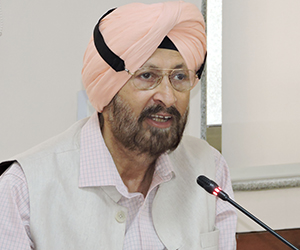Since independence, India has faced a large number of external and internal security challenges. The Indian army, the paramilitary forces and the Central Armed Police Forces (CAPFs) have worked hand-in-hand to manage and neutralise these challenges. While the army has been responsible to maintain the integrity of the country’s long land boundaries through four wars and the Kargil conflict, the CAPFs have been largely responsible to manage the land borders and lend a helping hand to the army for counter-insurgency operations. Some insurgencies are now being fought primarily by the CAPFs by themselves.
In May 2001, the Cabinet Committee on Security (CCS) had approved the concept of “one border, one force”. The Line of Actual Control (LAC) along the border with Tibet is now being managed largely by the Indo-Tibetan Border Police (ITBP). In the west, the entire border with Pakistan is manned by the Border Security Force (BSF) except the Line of Control (LoC) in Jammu and Kashmir (J&K). Maintaining the sanctity of the LoC is the responsibility of the army and some BSF battalions have been placed under its operational control for this purpose. For over 50 years since the Kashmir conflict began in 1947-48, soon after independence, the two armies were engaged in a so-called ‘eyeball-to-eyeball’ confrontation with daily loss of life and property that could justifiably be called a ‘low intensity limited war’. An informal cease-fire has been in place all along the LoC, including at the Actual Ground Position Line (AGPL) along the Saltoro Range west of the Siachen Glacier, since November 25, 2003.
The border with Nepal was virtually un-attended till very recently as Nepalese citizens have free access to live and work in India under a 1950 treaty between the two countries. Since the eruption of a Maoist insurgency in Nepal, efforts have been made to gradually step up vigilance along this border to prevent the southward spread of Maoist ideology. The responsibility for this has been entrusted to the Sashastra Seema Bal (SSB), erstwhile Special Security Bureau that is now a Ministry of Home Affairs force. The Bhutan border is also managed by the SSB. Since the Royal Bhutanese Army drove out the Bodo and ULFA insurgents from its territory some years ago, the border has been relatively quiet. The border with Myanmar also remains operationally active. Several insurgent groups have secured sanctuaries for themselves in Myanmar despite the cooperation extended to India by the Myanmarese army. The cross border movement of Nagas and Mizos for training, purchase of arms and shelter when pursued by Indian security forces, combined with the difficult terrain obtaining in the area, makes this border extremely challenging to manage. This border is manned by the Assam Rifles (AR), India’s oldest paramilitary force.
Along the Bangladesh border that has seen some action in recent years, the BSF is in charge. This border remains in the news as there are frequent clashes between the BSF and the Bangladesh Rifles (BDR). Managing this border is a peculiar challenge that is usually referred to as ‘Enclaves and Adverse Possessions’. There are 111 Indian enclaves (17,158 acres) within Bangladesh and 51 Bangladeshi enclaves (7,110.02 acres) in India.” Thirty-four tracts of Indian land are under the adverse possession of Bangladesh and 40 pieces of Bangladeshi land are in India’s adverse possession. Though the Land Border Agreement of 1974 has provisions for the settlement of the issue of adverse possession, it has not been implemented so far as the problem is politically sensitive.
The CCS had also approved the nomination of the Central Reserve Police Force (CRPF) as the country’s primary counter-insurgency force. Since then, the BSF has been withdrawn from internal security duties in J&K and has been replaced by CRPF battalions. The CRPF is also the primary strike force for anti-Naxalite or anti Maoist operations in the left wing extremism (LWE) affected states in central India. Though it has suffered many casualties in operations so far and is still on a learning curve, it is gradually gaining experience in counter-insurgency operations and can be expected to acquit itself creditably in future.
Over the last few decades, the CAPFs have seen rapid expansion, some of which appears to have been hastily undertaken. They face many structural problems and need to be reorganized to suit their evolving roles. Also, the lack of inter-departmental coordination has led to the sub-optimal exploitation of the combat potential of the various forces, which is not in the nation’s best interests. It is time the government appointed a high-powered Study Group to enquire into the challenges being faced by the CAPFs, with a view to recommending remedial measures to improve their efficiency.
Published Date: 2nd April 2013










Post new comment